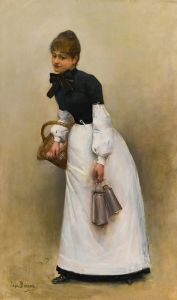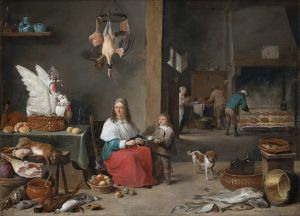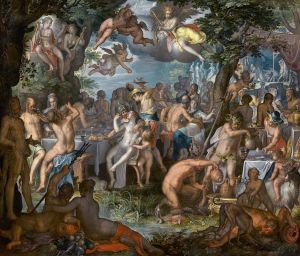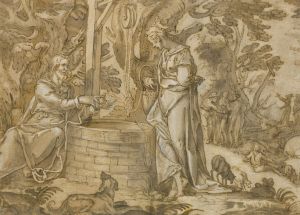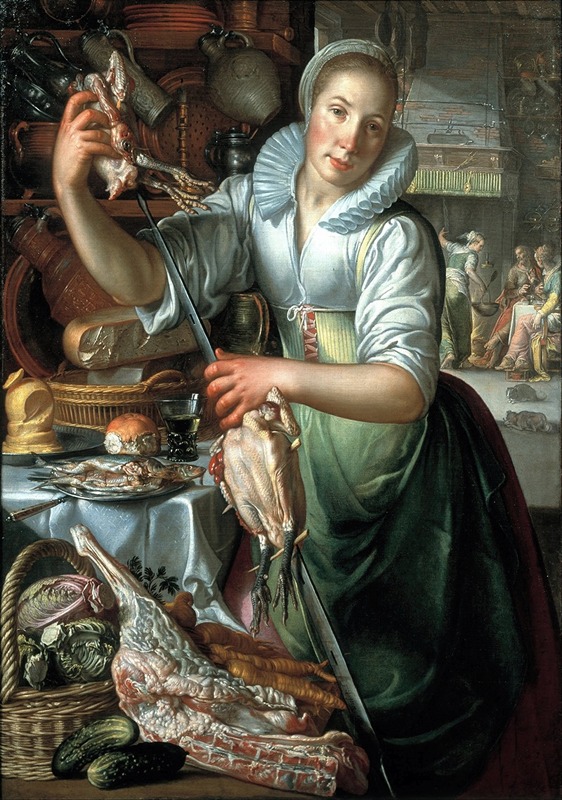
The Kitchen Maid
A hand-painted replica of Joachim Wtewael’s masterpiece The Kitchen Maid, meticulously crafted by professional artists to capture the true essence of the original. Each piece is created with museum-quality canvas and rare mineral pigments, carefully painted by experienced artists with delicate brushstrokes and rich, layered colors to perfectly recreate the texture of the original artwork. Unlike machine-printed reproductions, this hand-painted version brings the painting to life, infused with the artist’s emotions and skill in every stroke. Whether for personal collection or home decoration, it instantly elevates the artistic atmosphere of any space.
"The Kitchen Maid" is a painting by the Dutch artist Joachim Wtewael, created in 1620. Wtewael, born in 1566 in Utrecht, was a prominent figure of the Northern Mannerist style, known for his intricate compositions and vibrant use of color. His works often depicted mythological and biblical scenes, but he also created genre paintings that provide a glimpse into everyday life during the Dutch Golden Age.
"The Kitchen Maid" is an exemplary piece of Wtewael's genre paintings, showcasing his meticulous attention to detail and his ability to capture the essence of domestic life. The painting portrays a young maid in a kitchen setting, engaged in her daily chores. The composition is rich with various elements that highlight the domestic environment of the time.
In the painting, the maid is depicted standing near a table laden with an array of food items, including bread, vegetables, and poultry. Her attire is typical of the period, consisting of a simple dress with an apron, reflecting her status as a servant. The kitchen itself is filled with various utensils and cookware, emphasizing the busy and functional nature of the space.
Wtewael's use of light and shadow in "The Kitchen Maid" is particularly noteworthy. The light source, presumably coming from a window, illuminates the maid and the items on the table, creating a sense of depth and realism. This technique not only enhances the three-dimensionality of the objects but also draws the viewer's attention to the central figure of the maid.
The painting is also significant for its depiction of the social hierarchy and the role of servants in 17th-century Dutch society. The maid's focused expression and diligent posture suggest a sense of pride and dedication to her work, offering a respectful portrayal of domestic labor.
"The Kitchen Maid" is housed in the Rijksmuseum in Amsterdam, where it is part of the museum's extensive collection of Dutch Golden Age paintings. The painting is appreciated for its artistic merit as well as its historical value, providing insight into the daily lives and social structures of the time.
Joachim Wtewael's contribution to Dutch art is well-regarded, and "The Kitchen Maid" stands as a testament to his skill in capturing both the beauty and the reality of everyday life. His works continue to be studied and admired for their technical proficiency and their ability to convey the cultural and social nuances of the era in which he lived.





